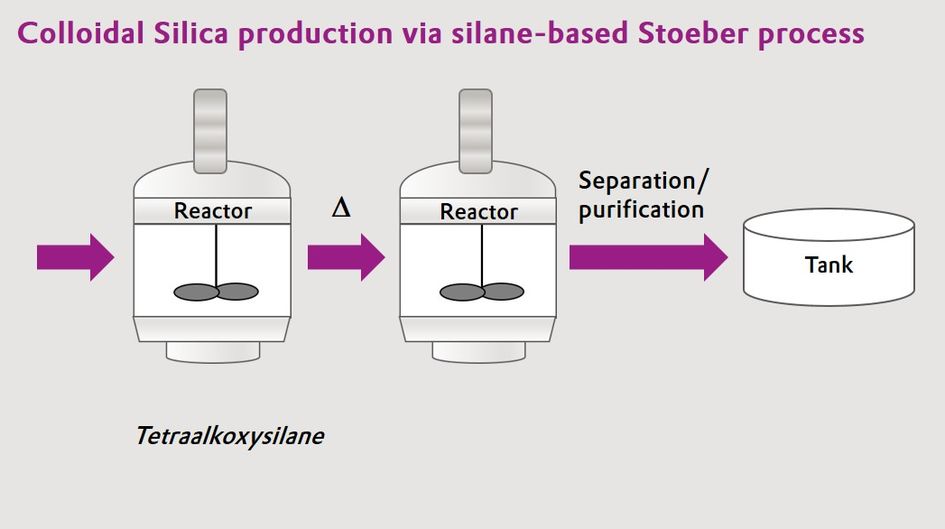
What's special about our IDISIL® Colloidal Silica?
What's special about our IDISIL® Colloidal Silica? What is the difference to other types of Silica?
WHAT IS THE DIFFERENCE BETWEEN SILANE- & WATERGLASS-BASED COLLOIDAL SILICA?
The key difference between Silane-based and Waterglass-based Colloidal Silica is in the silica precursor used in synthesis.

Silane-based Stoeber particles are made using hydrolysis and condensation of tetraalkoxysilanes. As a result of the synthesis process, Stoeber Colloidal Silica is high in purity (e.g. low in sodium and potassium ions) compared to Waterglass-based Colloidal Silica. Also, a wider particle size range is accessible with Stoeber particles (10-1,000nm) compared to Waterglass-based particles (5-50nm).
Our Silane-based IDISIL® Colloidal Silica particles are very monodispersed and have defined shapes (e.g. smooth spherical and peanut-shaped particles).

Waterglass-based Colloidal Silica is made using metal silicates. Here, liquid sodium or potassium silicates are acified and then ion exchange is performed to remove metal ions. Finally, particles are obtained by performing condensation polymerization.
Besides the mentioned, with our large library of Specialty Silanes and our expertise in Surface Functionalization we are uniquely positioned to tailor the IDISIL® Colloidal Silica particle surfaces to meet your specific needs.
With our toolbox we have, we are curious to explore those opportunities with you. Just contact us and let's start exploring together!

